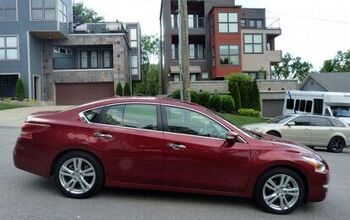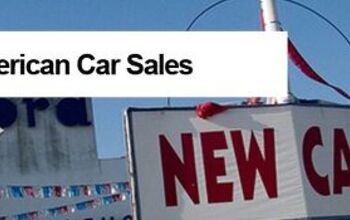Is December the New Normal for U.S. Car Sales?

The New York Times has put out a story saying what’s already on many industry observers’ minds: “The historic collapse of the new-car market dragged on in December, raising questions of whether the auto industry will ever again have sales levels that it took for granted just a few years ago.” The easy credit, hyper-consumerism era had established new car sales in the 16 million per year range. But then along came 2008’s dismal 13.2 million units… and the last half of the year was much worse than the first. Even the former “don’t worry, be happy, better days are just around the bend” cheerleaders have given up. “GM’s chief market analyst, Michael C. DiGiovanni, said the automaker was predicting industry sales of 10.5 million to 12 million vehicles for the year.” Long time industry pundit John Casesa says: “After an era of excess indulgence, we’re now entering a prolonged period of conservation. Trading in a car every three years is a luxury that the average American can no longer afford.” Against that background, one can only wonder what fantasies will be embedded in the new, new, newest turnaround plans GM and Chrysler will hand in to the U.S. Treasury Department a few short weeks from now. No matter what their term papers say, Casesa pegs it: “The internal problems of the Big Three are so great, there is no way they can survive without government help for several years.”
Much of the new car and truck market has been made up of people who wanted new wheels, who “deserved” new wheels and not those who really needed them. Meanwhile, the average age of the fleet on our roads has risen from about six years in the 80s to around nine years now. That 50 percent increase in automotive longevity is both a great technical accomplishment for the industry and a big sales problem.
The old regimen of planned obsolesce driving demand for new cars ran smack dab into import competitors who played by different rules and forced the game to change. For a time, the easy money era masked this dwindling underlying demand brought on by longer lasting vehicles.
In fact, the U.S. now has more registered vehicles than it does licensed drivers (guilt as charged in our home!). The shift from one income to two income households over the past few decades probably has much to do with that as well. But, the demand pumping game has come to a sudden screeching halt and many formerly two income households have been brutally pushed back to one or zero incomes.
Bush 41’s favorite word “prudence” is suddenly back in style. Those consumers who still have jobs are watching their budgets just like grandpa used to.
So where does that leave the underlying demand picture? My guess: around 10-11 million per year for quite a few years to come. If so, almost everyone is in big, big trouble. Marginal players like Chrysler, Mitsubishi, Suzuki, Kia, Jaguar, Land Rover and most of GM’s brands will have no choice but to close up shop in the U.S. Things look bleak for VW/Porsche/Audi as well. VW/Audi hasn’t made a profit in the U.S. in ages, and that was when times were pretty good.
A period of great extinction is once again upon the industry.

More by John Horner
Latest Car Reviews
Read moreLatest Product Reviews
Read moreRecent Comments
- Danddd Or just get a CX5 or 50 instead.
- Groza George My next car will be a PHEV truck if I can find one I like. I travel a lot for work and the only way I would get a full EV is if hotels and corporate housing all have charging stations.I would really like a Toyota Tacoma or Nissan Frontier PHEV
- Slavuta Motor Trend"Although the interior appears more upscale, sit in it a while and you notice the grainy plastics and conventional design. The doors sound tinny, the small strip of buttons in the center stack flexes, and the rear seats are on the firm side (but we dig the ability to recline). Most frustrating were the repeated Apple CarPlay glitches that seemed to slow down the apps running through it."
- Brandon I would vote for my 23 Escape ST-Line with the 2.0L turbo and a normal 8 speed transmission instead of CVT. 250 HP, I average 28 MPG and get much higher on trips and get a nice 13" sync4 touchscreen. It leaves these 2 in my dust literally
- JLGOLDEN When this and Hornet were revealed, I expected BOTH to quickly become best-sellers for their brands. They look great, and seem like interesting and fun alternatives in a crowded market. Alas, ambitious pricing is a bridge too far...


































Comments
Join the conversation